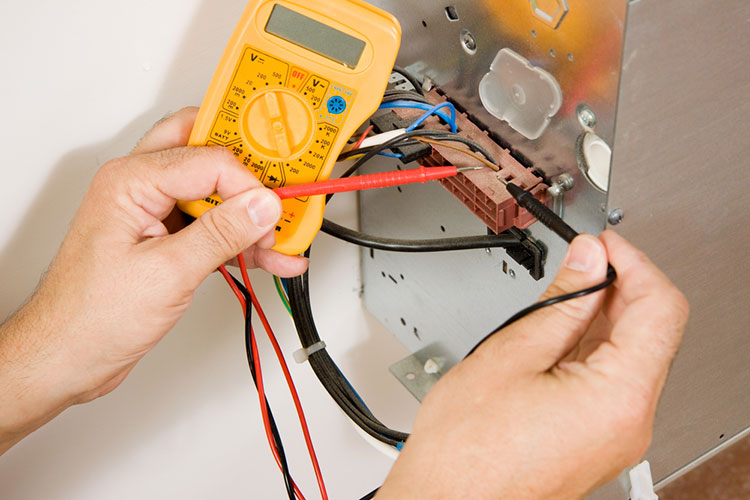A line and load check is an important part of any electric motor preventative or predictive maintenance program. The first thing you need to understand is what the words “line” and “load” mean to individuals working in the electrical trades.

The “line” generally refers to the wires that bring power (electricity) from the source to a device. Some people also refer to the “line” as “incoming” or “upstream” as well. The “load” refers to wires that carry power to other devices along the circuit. These are also known as “outgoing” or “downstream” wires. Both of these terms change depending on where a particular device is in a circuit. For example, the “load wire” for one device is the “line wire” for the next device that is downstream within that circuit.
Line and load checks are performed with the one of the most common tools used by anyone who works with electricity: the multimeter. The multimeter can help you find where there might be a problem with the current running through the circuit. Other tools such as a clamp on ammeter can also measure the amperes (amps) in the current by measuring the magnetic field generated by that current. In short, a multimeter can tell you if there is current in the circuit and where, and the ammeter can tell you how strong that current is.
Other tools that may be used in a line and load check is a Megger. A megger looks at the voltage flowing between its two probes and calculates the insulation resistance (IR). These are used when the technician suspects that there may be an issue with the quality of the insulation installed in the electric motor. This can be generally done with a multimeter, but a Megger test is far more accurate.
Probably one of the best tools you can use for line and load checks are electric motor circuit analysis tools such as the MCEMAX® powered by MCEGold®. These units can provide detailed test results about the stator, rotor, and air gap. In addition, the MCEMAX® performs the tests associated with a line and load check such as power quality, power circuit and insulation tests.
Line and load checks are used specifically to find problems with the flow of electrical current through an electric motor. Some indicators of a possible line and load problem include:
All of these issues may be caused by a line and load current issue. From wiring the motor incorrectly, to shorts in the wiring or insulation, to using too much or too little voltage for the assigned task, these can be tricky problems to find the cause.
At Tekwell Services, we perform line and load checks (along with a battery of other tests for your electric motor) with the MCEMAX® powered by MCEGold®. Give us a call (toll-free) at 1-888-984-4668 or fill out our quick solution form at the bottom of our Contact page, to schedule testing for your electric motor today.